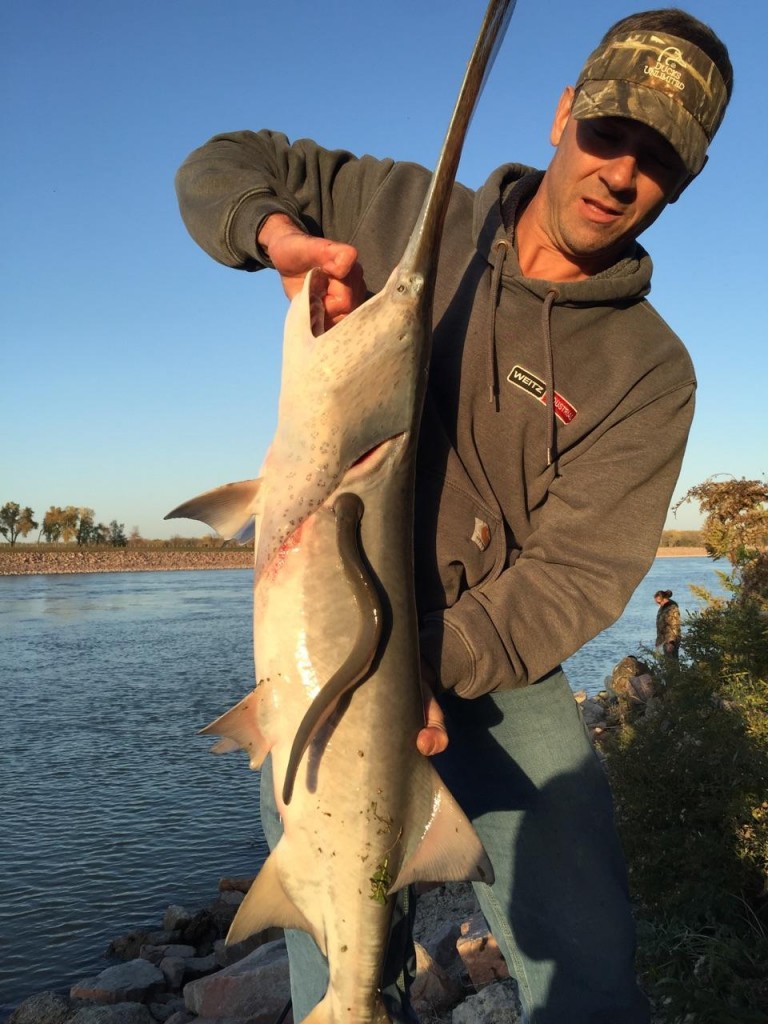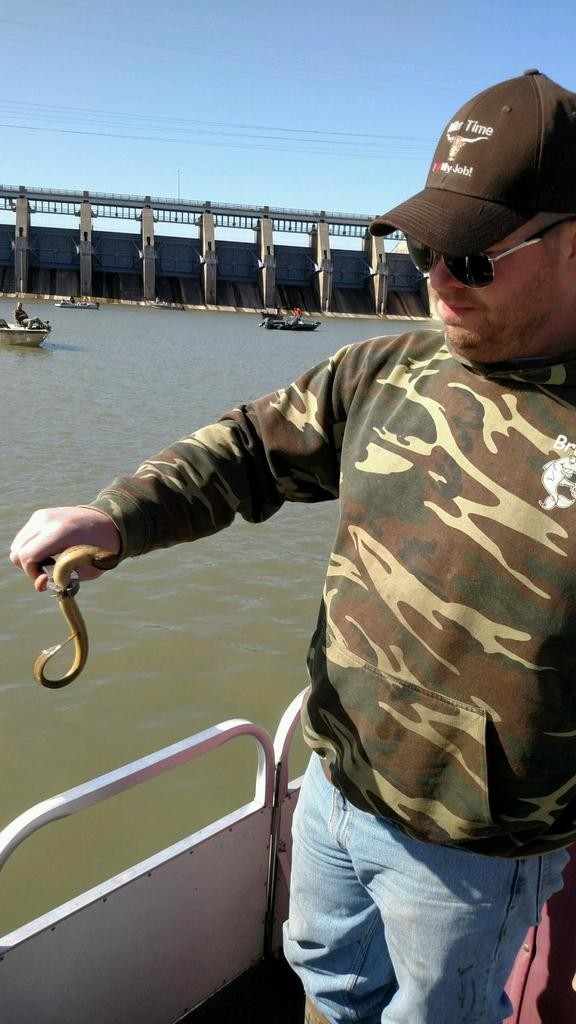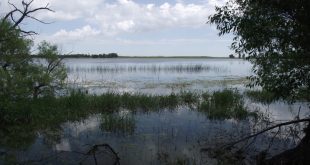Just in time for Halloween, I have to tell you about a fish, a “scary” fish. . . .
As I have mentioned in a couple of blog posts in recent weeks, our Nebraska paddlefish snagging season is in “full swing” during the month of October (a little World Series lingo there). We have had a new state record paddlefish caught during this year’s season, Stop the Presses, BIG FISH!, and recently I have shared some other interesting paddlefish news items, More on the Paddlefish Front.
But wait.
There is more.
And some would consider this to be scary, horrific, even terrifying. . . .
We have had more than one report of paddlefish caught during this year’s snagging season that were carrying something that has not been seen “in these parts” very often. Something I have heard about, but never seen until this year. These were paddlefish that had “hitchhikers” attached to them, some would say “disgusting”, “gross”, “ugly”, parasitic hitchhikers! Lampreys!
Here is another view of one after it was detached from a paddlefish that had been caught:
Many folks have heard of lampreys, thanks to TV shows like River Monsters. If you have spent any time around the Great Lakes, you might be aware of the exotic, invasive sea lamprey that has caused problems there, and has been managed for many years now. But, I am betting you did not know that we had lampreys in Nebraska waters and these lampreys are native species!
I cannot tell you for sure which species of lamprey were attached to those paddlefish caught below Gavins Point Dam in the past month. There is some debate on the exact identification. They are either silver lamprey, Ichthyomyzon unicuspis or chestnut lamprey, Ichthyomyzon castaneus. To tell the difference between those two species, we need to see the teeth, and I have not seen any pictures or specimens that would allow us to do that.
Looking through some of the pointy-headed texts sitting on my desk, those on fish identification and description, I have learned some interesting things about these native lamprey species. Yes, the adult silver and chestnut lampreys are parasitic on fish. Yes, they attach to the side of a fish, bore a hole and then feed off of that fish. But, they are parasitic only in their adult form and only for a portion of their life cycle. For much of their life, in their larval form, for a period of a year or two, they inhabit smaller rivers and streams where they burrow into bottom substrates and filter organic matter and small food items from the water and “mud”.
To change into their adult form, their mouth parts change. This transformation takes time, typically several months, and they do not feed while changing to the adult form. As adults they migrate to larger bodies of water where they attach to other fish. Host fish may carry the lampreys for several days, until the lampreys are full. Then the lampreys drop off until they need to feed again. Host fish usually do not perish from the lamprey attack although there is a risk of secondary infections at the wound site.
These lampreys will exist as adults for only a year or two at which time they spawn and die. Spawning locations are back in smaller rivers and streams.
From the references I could find, it appears that lampreys are not common on Nebraska’s stretch of the Missouri River. Reports are much more common south of the Nebraska border, on down the Missouri and into the Mississippi River. I suspect the habitat of those small tributaries farther south are much more favorable for larval lampreys than what we have here in Nebraska.
Which brings up an interesting point. The lamprey-carrying paddlefish caught during our snagging season this fall likely originated in waters far to the south and east of Nebraska. I would guess that those paddlefish migrated up the Missouri River from the state of Missouri or perhaps even came farther upstream from the Mississippi or even other large rivers “back east”. We know that large river fish species in U. S. waters often migrate over long distances. Migrations of hundreds, even thousands of miles have been documented. In this case, those paddlefish picked up lampreys hundreds of miles from the Gavins Point Dam tailwaters where the paddlefish were eventually caught.
I have no idea why we have seen more lampreys on paddlefish this year. I suspect it has something to do with Missouri River flows, but we did not hear a bunch of lamprey stories after the great flood of 2011 when there was A LOT of water traveling down the Missouri. Who knows? Maybe it was just a really good year for lampreys someplace a long ways away from Nebraska?
Most folks have a repulsive reaction to anything parasitic. I can understand that. I also know that folks tend to hate things that look like snakes, and lampreys certainly look like that too. So, I suppose, unfortunately, that many will consider these lampreys to be disgusting “demon” fish. But honestly, they are an uncommon part of Nebraska’s natural, native fish community. I always remind folks that it is a “fish eat fish” world in our waters, and the chestnut and silver lampreys are just filling their niche in that world. Their niche is a little bit different, a little bit unusual, but that is what makes them cool! At least they are “cool” to pointy-headed fish biologists.
If you happen to encounter a lamprey in Nebraska waters, I would love to hear about it, would love to see a good photo of the mouth parts! Maybe even throw it in the freezer for us!
 Nebraskaland Magazine
Nebraskaland Magazine





